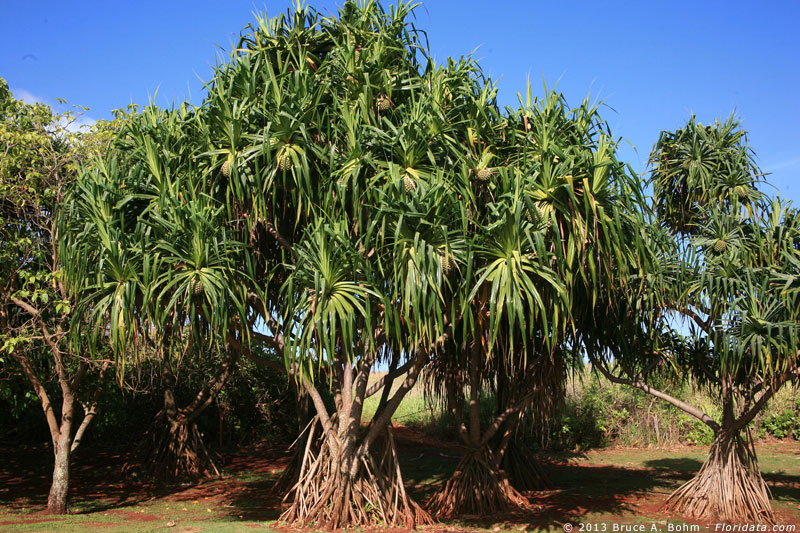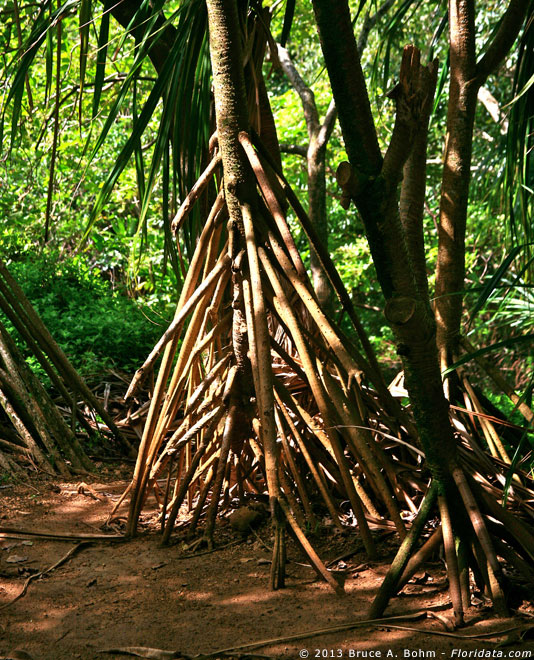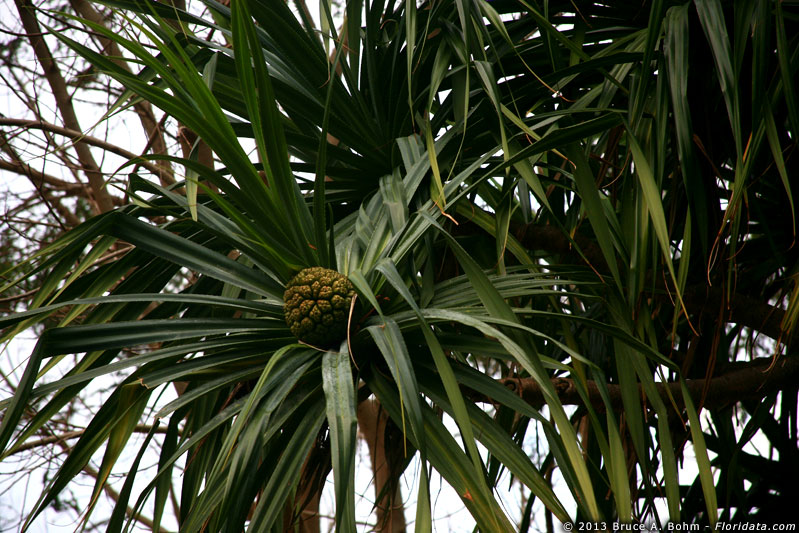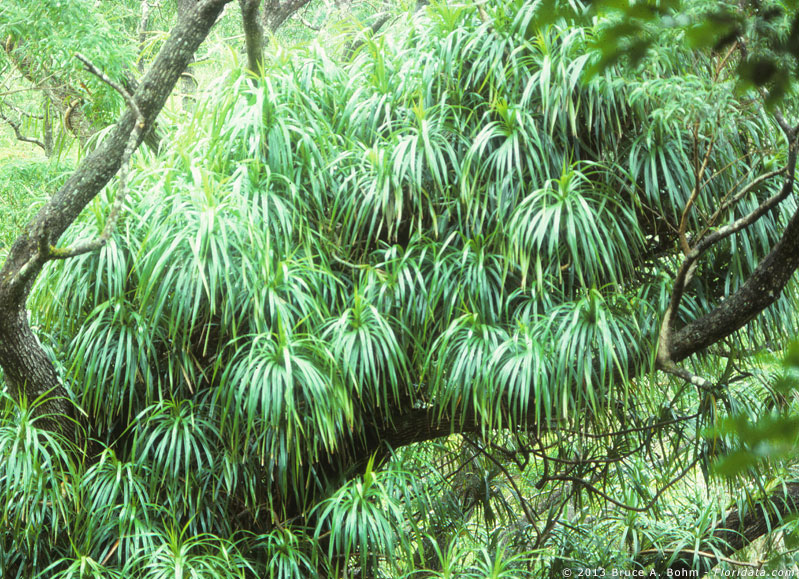





Pandanaceae, the screw pine family, consist of three (Manual) or four (Mabberley, p. 625-626) genera, two of which have a representative each on the Hawaiian Islands. Pandanus, the screw pine itself, is the largest of this group having as many as 700 tropical species according to authors of the Manual (Mabberley, p. 626, estimates about 520). Major centers of diversity for Pandanus are Malesia with about 450 and Madagascar with about 85. Pandanus tectorius, known as hala or pü hala, occurs on all of the main Hawaiian Islands except Kaho`olawe.
Two features of this plant make it one of the easiest to identify, its stilt roots (see image) and the large fruit borne by the female plant (see image), which some tricksters like to describe to tourists as the fruit of the pineapple tree. Pandanus is marked as an indigenous species in the Manual in line with the reasonable long distance dispersal capacity of its fruit by flotation. The plant is very much appreciated by peoples of the Pacific Islands and thus could have been brought by early colonists. In fact, as authors of the Manual point out, it could have arrived on the islands by both routes so that what we see today may be offspring of mixed historical parentage. David Burney (2010) comments in his new book that hala fruits have been identified in sediments that have been dated to pre-Polynesian times.
Almost all parts of the plant have been used. Leaves were used for weaving a variety of products including floor mats, carrying bags, hats, and thatching. Roots can yield fiber for cordage and the seeds can be eaten. Hawaiians recognize four different varieties of Pandanus based upon fruit (technically, phalanges, but simply called keys by many writers) color: hala with yellow keys; hala `ula with red keys; hala lihilihi `ula, with red keys shading to yellow; and hala pia, with small yellow keys. Mixing of these different colored forms produced very attractive lei.
The most important use of lau hala, leaves of the Pandanus, is in the making of floor mats. In addition to using leaf strips of different widths to make different size mats, the location of the leaves on the tree dictate their particular usefulness.


This distinction, described in detail in HHK (pp. 203-204), is summarized here. Older leaves and those lower on the tree that had turned brown are tough and suitable only for ordinary floor mats. The next row of green leaves are too stiff for making fine mats, but presumably acceptable for general purpose ones. Next in order are pale green leaves that are used for making fine quality mats. Leaves that are almost white, with only green tips, are made into fine mats, while the white unopened leaves are used to make only the finest of mats.
The other representative of Pandanaceae on the islands is the indigenous Freycinetia arborea, `ie`ie. Its climbing habit, hence the 'arborea' part of its name, is illustrated in the photo, while its large and impressive fruiting structure can be seen (photo). Freycinetia consists of about 300 species ranging from Sri Lanka in the west to New Zealand and Melanesia and Polynesia in the east. `Ie`ie occurs on all the main Hawaiian except Ni`ihau and Kaho`olawe, neither of which is likely wet enough to support this plant.
Aerial root fibers of `ie`ie were used for making twined baskets, reputedly the finest in Polynesia (Krauss, p. 28). The baskets had a variety of uses including holding gourds or other vessels, or simply for personal items.
Literature cited…
Burney, D. A. 2010. Back to the Future in the Caves of Kaua`i. A Scientist's Adventures in the Dark. Yale University Press, New Haven, CN, p. 128.
Handy, E. S. C. Handy, E. G. Handy and M. K. Pukui.1991. Native Planters in Old Hawaii. Their Life, Lore, and Environment. Revised edition. Bishop Museum Press, Honolulu, HI.
Krauss, B. H. 1993. Plants in Hawaiian Culture. University of Hawaii Press. Honolulu, HI.
February 14, 2013